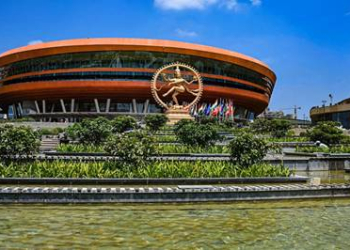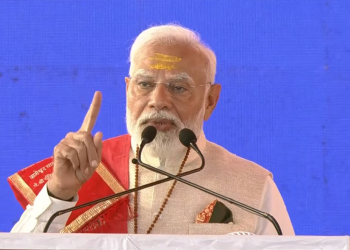New Delhi: At the current emission cuts promised, many parts of northern and coastal India would reach extremely dangerous wet-bulb temperatures – a measure combining both health and humidity – of over 31 degrees Celsius towards the end of the century, a new UN report has warned.
A wet-bulb temperature of 31 degrees Celsius is extremely dangerous for humans, while a value of 35 degrees Celsius is unsurvivable for more than about six hours, even for fit and healthy adults resting in the shade. Even below these levels, heat can be deadly, especially for old or young people or those doing hard physical work.
These are the findings of the Intergovernmental Panel on Climate Change (IPCC) Sixth Assessment Report (AR6) Working Group II (WRG II) report – titled IPCC AR6 WGII ‘Climate Change 2022: Impacts, Adaptation and Vulnerability’ – that pointed out the range of impacts India is vulnerable to: heat stress, which can increase beyond the threshold of human survivability, impacts on food production due to climate change, which includes food crops, fisheries, compounding disasters, and disasters elsewhere that will impact international supply chains, markets, trade, and result in economic shocks among others.
Citing a study, the IPCC report said, if emissions are cut, but only by the levels currently promised, many parts of northern and coastal India would reach extremely dangerous wet-bulb temperatures of over 31 degrees Celsius towards the end of the century. However, if emissions continue to rise, wet-bulb temperatures will approach or exceed the unsurvivable limit of 35 degrees Celsius over much of India, with the majority of the country reaching wet-bulb temperatures of 31 degrees Celsius or more.
The study also mentions that under the high emissions scenario, the end of the century, Lucknow and Patna would be among the cities predicted to reach wet-bulb temperatures of 35 degrees Celsius if emissions continue to rise, while Bhubaneswar, Chennai, Mumbai, Indore, and Ahmedabad are all identified as at risk of reaching wet-bulb temperatures of 32-34 degrees Celsius with continued emissions.
Overall, Assam, Meghalaya, Tripura, West Bengal, Bihar, Jharkhand, Odisha, Chhattisgarh, Uttar Pradesh, Haryana, and Punjab will be the most severely affected, but if emissions continue to increase, all Indian states will have regions that experience wet-bulb temperatures of 30 degrees Celsius or more by the end of the century, the report said.
Not just in India, in fact, in South Asia particularly, intense heat waves of longer durations and higher frequency are projected with medium confidence over India. At the city-level, these projections could translate into significant impacts: at 1.5 degrees Celsius, on average, Kolkata will experience heat equivalent to the 2015 record heat waves every year, and under 2 degrees Celsius warming, it could expect such heat annually.
Critically, the impacts of extreme heat are experienced disproportionately within cities with the poorest populations and those with lower access to green spaces affected most, the report said.
According to Katja Frieler, a lead author of the IPCC report’s chapter on observed cross-sectoral impacts, and co-chair of the Transformation Pathways Research Department at the Potsdam Institute for Climate Impact Research, “Exceeding 1.1 degrees Celsius of global warming today doesn’t sound like much, yet the impacts of human-induced climate change on people and nature become more and more visible.”
The IPCC, a United Nations body solely dedicated to looking at the science behind climate change, released this major report on the impacts of the climate crisis and why it is imperative that we act now to address the growing risks later.
(IANS)




















